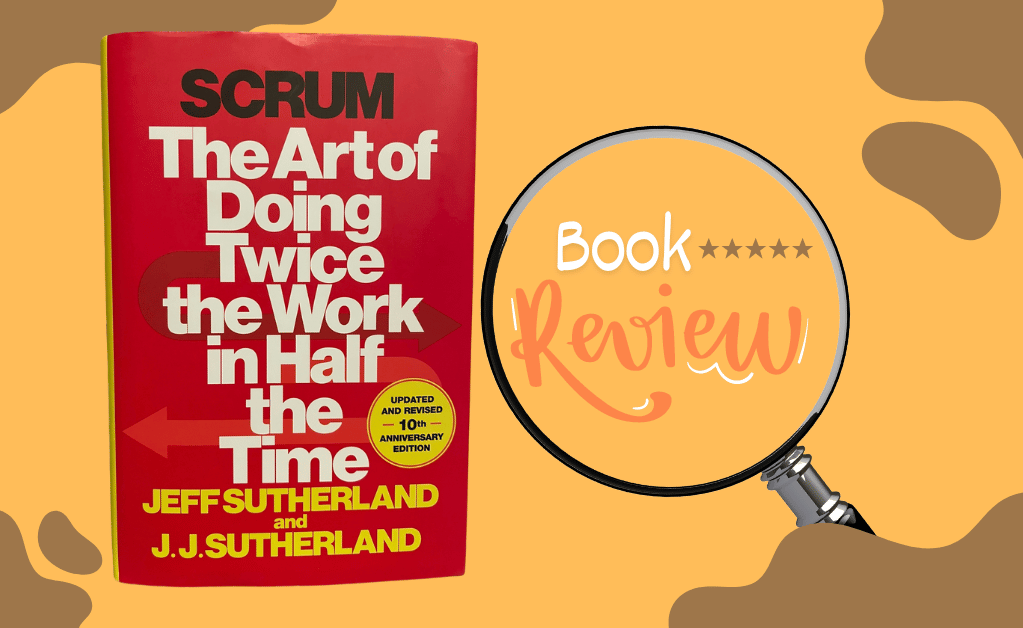Table of Contents
ToggleScrum Demystified: Insights from Jeff and JJ Sutherland's "Red Book"
In “Scrum: The Art of Doing Twice the Work in Half the Time”, Jeff Sutherland and JJ Sutherland distill the essence of Scrum, providing both beginners and seasoned practitioners with a comprehensive guide to this agile framework. Whether you’re curious about Scrum or an experienced professional seeking a refresher, this book offers a wealth of insights, theories, and real-world examples. The authors not only explain the mechanics of Scrum but also delve into the psychology and principles behind its effectiveness.
What is Scrum?

Basic
Scrum emerged from the recognition that there was a more effective way to implement projects and deliver value, transitioning from the traditional waterfall approach to a more agile, iterative methodology. This agile framework incorporates elements of Lean, Extreme Programming (XP), and best practices, such as:
- Autonomous, empowered self-organizing teams
- Deming’s Plan-Do-Check-Act cycle
- The Japanese practice of ShuHaRi
Scrum emphasizes iterative progress through small, cross-functional teams working towards a common goal. Jeff and JJ Sutherland trace the history of Scrum, explaining its origins and evolution, making it evident why this methodology is favored by many organizations today.
Why It's Worth Reading
Comprehensive Insight
One of the standout features of this book is its dual approach. The authors don’t just offer a step-by-step guide on implementing Scrum; they go deeper, explaining why each aspect of Scrum is necessary. For instance, Jeff Sutherland describes why the size of a team matters, using real-life examples to illustrate the exponential increase in communication channels as more people are added to a team. The formula [communication channel = n(n-1)/2] is used to demonstrate this complexity.
Real-Life Examples
The book is peppered with stories of both success and failure, providing readers with a balanced view of Scrum’s potential and pitfalls. These stories are not just illustrative but also serve as case studies that offer actionable insights.
Supporting Studies and Principles
The authors bring in psychological studies and theories, including Maslow’s hierarchy of needs, Fundamental Attribution Errors, and Dual-Task Interference, to name a few. These references enrich the content, making it not just a manual for Scrum but a holistic guide to understanding teamwork and productivity.
How to Use It
Tactical Guidance
Beyond the theoretical underpinnings, the Sutherlands provide practical advice on making Scrum work within teams and at scale (Scrum@Scale). This makes the book invaluable for project managers, scrum masters, and delivery/implementation managers who are looking to implement Scrum in their organizations effectively.
Key Takeaways
For teams and organizations implementing Scrum, the following elements are essential:
- Cross-Functional, Long-Lasting Teams: The book underscores the significance of small, cross-functional teams that are motivated and engaged.
- Autonomy, Mastery, and Purpose: Team members must be empowered to make decisions, continuously improve, and understand the overarching purpose of their work. (Curious to learn more, check out our review on Drive).
- Realistic Expectations: The authors frankly acknowledge that Scrum is not a magic solution; it requires time, dedication, and proactive effort to produce results.
- Scrum Principles, Not Process: Success comes from applying Scrum principles to achieve desired outcomes, such as value delivery, rather than adhering to a strict process or set of rules.
Personal Insights
When I first began reading “Scrum,” I expected a straightforward introduction to the framework. It felt akin to a medical doctor reading a nursery book to learn about anatomy. However, as I delved deeper, I discovered the book offered far more. It presented a rich tapestry of theory, supported by studies, expert insights, and real-life examples, demonstrating how Scrum has driven organizational success—or highlighted failures in its absence.
I particularly appreciated the historical anecdotes, which provided a deeper understanding of how Scrum originated and why it remains effective. In the 10th anniversary edition of the “Red Book,” the authors enhance their work and include success stories from various organizations across different fields—venture capital, car manufacturing, weddings, government, pharmaceuticals, and more. These examples reinforce the versatility and effectiveness of Scrum beyond its roots in software development.
Conclusion
“Scrum: The Art of Doing Twice the Work in Half the Time” by Jeff Sutherland and JJ Sutherland is a must-read for anyone interested in optimizing their work processes, achieving greater efficiency, and continuously delivering high value product and/or service. Whether you’re new to Scrum or a seasoned practitioner, this book offers valuable insights that can help you implement and refine Scrum in your organization.
If you’re ready to transform your team’s productivity, this book is your guide. And if you’re looking for personalized advice, consider booking a call with one of our expert coaches who can help you integrate Scrum into your workflow.
Happy reading and happy scrumming!
Like what you see? Check out our other book reviews on Agile Estimating and Planning or GenerativeAI.
